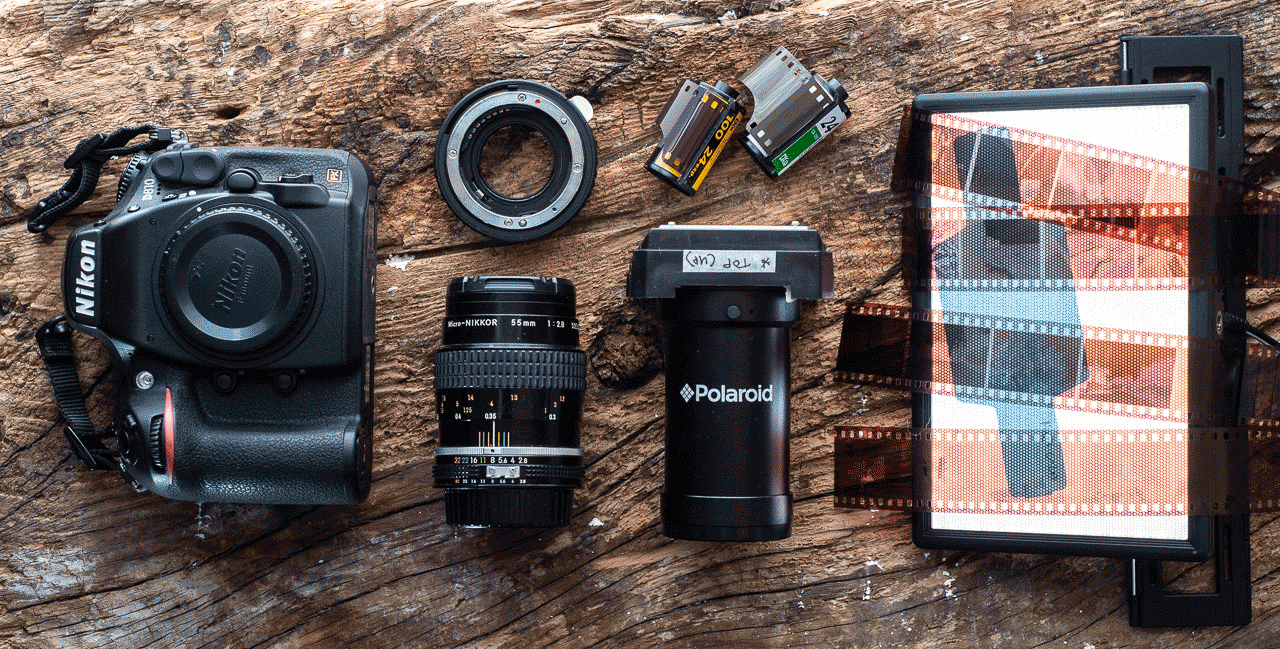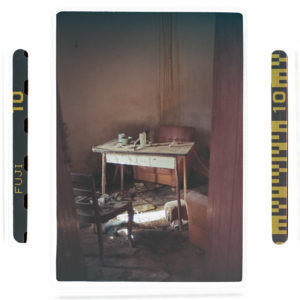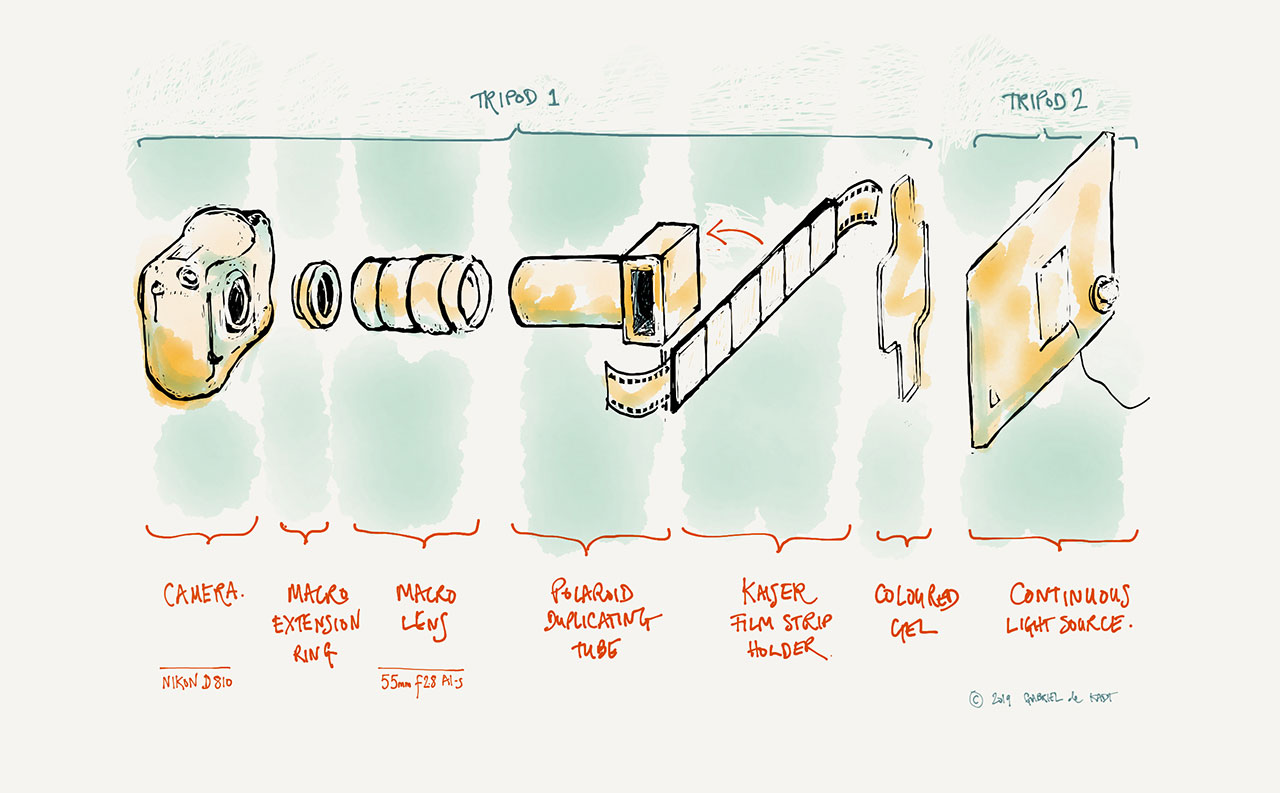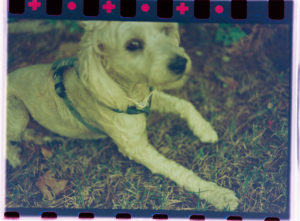“Well, shake me down with a wobbly tripod.”
35mm scanning before:
Great quality, no speed
It’s been nearly a decade since I sold my Nikon Coolscan LS-40 35mm scanner. An excellent scanner with hardware dust and scratch removal [remember Digital ICE?]; great resolution; excellent colour fidelity and very decent density range. But it was a slow beast and would take a couple of minutes to scan a single frame. Slow that to nearly 20 minutes for its best quality, multi-pass scans.
35mm scanning now:
Speed, with ‘other’ qualities
Now I rig up my DSLR to a slide duplicator and things are a lot quicker. Granted – I’m not getting the same quality results. This new process is prone to colour shifts – dust and scratches but these low-fi results are, akchewally, rather pleasing. After all – when I want clean, clear, grain-free images I shoot digital. [Those Lomography folks have a lot to answer for.] Once set up it only takes a couple of minutes per film.
35mm film to DSLR scanning set-up
Until recently I’d been using an Opteka slide duplicator threaded onto a 50mm prime. It has a close-up lens built in but no way to handle filmstrips. If you faff about you can thread film strips through it but it’s fiddly.
My new, improved rig is based around a Polaroid-branded slide duplicator and a proper macro lens. The duplicator has the same default 52mm thread fitting but it has a removable close-up lens and it can take a film strip holder as well as mounted slides. This is connected to an old Micro-Nikkor 55mm f2.8 AI-s lens. This macro lens still needs an extra boost – a small macro ring adaptor.
Finally – add light and – if you’ve got neg film on a dense orange stock – a light blue/green gel…
On Tripod #1
- Camera (Nikon D810)
- Macro extension tube (Meike macro extension tube set, bought 2016 @50€)
- Macro lens (Micro-Nikkor 55mm f2.8 AI-s, 52ø) (You can use a standard lens and keep the close-up element on the Polaroid duplicator)
- Slide duplicator (Polaroid HD Slide Duplicator, 52ø, May 2017 @30€)
- Filmstrip holder (Kaiser Fototechnik 6507, Aug 2018 @20€)(Without this you’re hand-holding the film in place.)
- Coloured gels (helps with post for colour negs: light blue-green from Selens Universal 20x Gel set, Aug 2018 @10€ )
On tripod #2
- Light source (Viltrox L116T continuous LED light, Nov 2017 @30€)
Bob’s your uncle!
(Not sure who to feel sorrier for.)
A simpler, and cheaper, one tripod setup
- Camera
- Standard 50mm lens
- Slide duplicator (keep the close-up element on)
- Natural light source
Last updated on 17th June 2019





Leave a Reply